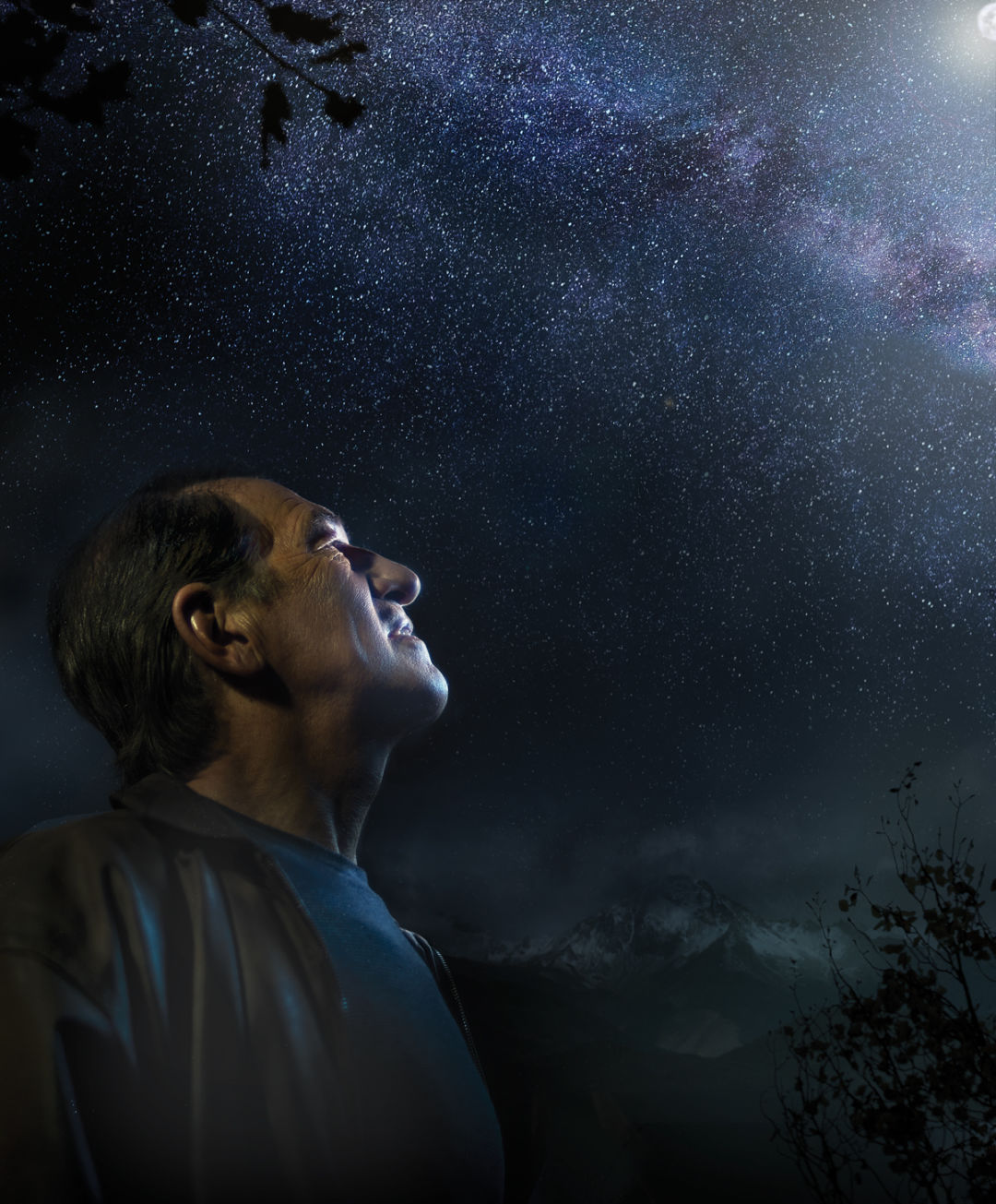A Q & A with Leading Astronomer David Aguilar

David Aguilar gazes at the night sky from, appropriately, Starwood.
Image: Karl Wolfgang
Aspen Sojourner: As a polymath with many interests, how did you become an astronomer?
David Aguilar: My interest in astronomy began when I was very young. I was absolutely in love with the planets and the idea that it’s our destiny to live in outer space and to explore. I was drawn into the mystery and the beauty, and it proceeded to me building telescopes. I went into the career by accident, though. I was a marine biologist in grad school in California and stopped at a planetarium one day to volunteer to run the star machine. Within three months, a gentleman came up to me and said they were looking for a director at a neighboring planetarium, so I jumped fields.
What brought you to the Roaring Fork Valley?
I used to fish here when I lived in Boulder [where he worked at the University of Colorado and Ball Aerospace]. While living in Boston [and working at the Harvard-Smithsonian Center for Astrophysics], my wife and I built a house in Missouri Heights and moved in full time three years ago. We came here for the dark skies and a little bit of acreage.
You’ve been involved in several space missions; any favorites?
I was part of an imaging team for Halley’s Comet, so I was one of the first humans to see what it looked like. I was part of the Hubble Telescope repair team. But the pinnacle was being on NASA’s New Horizons mission team and being there when all of a sudden here comes the first image of Pluto that humans have ever seen. Even today it gives me goosebumps to think how incredible that was. On January 1, 2019, we’re going to image the farthest building block of our solar system, Ultima Thule [Kuiper Belt object 2014 MU69 ]; it’s 1 billion miles beyond Pluto.
Why does it matter that we understand what’s going on in outer space?
It involves everything in our everyday lives and everything that influences the future of our species and our planet, because it’s all spelled out in front of us—from evolution to the creation of life to life elsewhere in the universe. And we’ve now begun locating similar Earth-like planets orbiting around other stars—we’ve already discovered more than 360. What would it look like for humans to live on these worlds? Is it really our destiny to spread through the universe, and are these all of our new homes that we are finding right now? I think it’s the most significant thing that’s happened in the last 100 years in astronomy.
Do you think there’s other life in the universe?
Of course. Here’s the weird thing about life: Once it starts, it’s almost impossible to destroy. We may set off every nuclear weapon on this planet and scorch the surface, but 16 miles underground, life will continue living. I believe it’s so tenacious that we will find other planets teeming with life. Life may be more baffling, more bizarre than we can imagine. It’s not going to have two arms, two legs, a head on top of its shoulders with two eyes and a mouth, but it will be intelligent.
Tell us about your creative side. You create space-themed art, and you were the lead vocalist and songwriter for a 1960s garage rock band that recently made a comeback.
From my teen years I’ve gravitated to music and art. And I connect the two together. For example, when I’m painting for National Geographic a picture of an alien world, I literally hear music in my head. So I’ll create a piece of outer-space music that I will play back as I finish the painting. As a young man, I was lucky to join the Chocolate Watchband, which was very successful—we did a lot of albums and movies—but I decided after a few years that was not going to be my life, and I went back into academics. Now more of our albums are out, and we just signed a contract for a new album. And we’re touring the festivals in Europe next spring.
How does it feel to have an asteroid named after you?
It came as a surprise. Then I realized it’s an Earth-crossing asteroid—these are the ones we’re afraid might hit the Earth and wipe us out, like the one that wiped out the dinosaurs. But it is a great honor to think there’s a space rock floating around out there with my name on it. And I have seen it through my telescope in my home observatory on Missouri Heights.













































